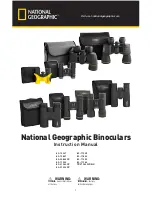
11
COOL VIEWS WITH YOUR
ZHUMELL ZENITH TELESCOPE
THE MOON
As you set out to begin viewing, one of the easiest and most enjoyable
objects to check out is the moon. Finding the moon and adjusting to view it
is a good way to acquaint yourself with the movements of your telescope.
Practice using the right ascension and declination adjustments to bring the
moon into the center of your view. Focus your view by turning the knobs
located on the smaller end of the OTA.
Once you’ve located the moon and successfully focused your telescope
on it, experiment with focusing and your different eyepieces. This will help
familiarize you with the different results you can get from your telescope.
THE PLANETS
Once you’ve used your telescope to view the moon, you should be familiar
with the basic telescope movements and adjustments you need. Next
stop: the planets. Not all the planets are visible from one area at one time,
so you’ll need to do a little research before you begin. There are a number
of online resources helpful for discovering what planets and objects should
be visible in your area on any given night.
To find a planet, you must first locate it with the naked eye. Once you’ve
got its general location, point your telescope in that direction and center the
planet in the crosshairs of your Finderscope. Once the planet is lined up in
the finderscope, begin to view the planet through your telescope using the
lowest power (longest focal length) eyepiece. You may need to make slight
adjustments to the telescope aim and you will need to focus the eyepiece
to bring the planet into full view.
For a closer look at the planet, replace the low-powered eyepiece with a
higher-powered one and refocus your telescope.


































